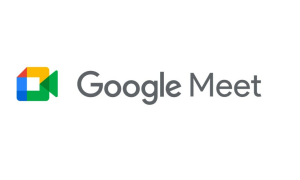In today’s digital landscape, the role of advertising in supporting online content creators and platforms cannot be overstated. However, the rise of ad blockers has posed challenges for the sustainability of online advertising and its impact on content creators. To tackle this issue head-on, YouTube, the world’s leading video-sharing platform, has announced its intention to encourage users to disable their ad blockers. This decision has ignited passionate discussions about the delicate balance between user experience and the financial viability of online content.
The Vitality of Ad Revenue
For content creators on platforms like YouTube, ad revenue is the lifeblood of their creative endeavors. It enables them to continue producing top-notch videos, upgrade their equipment, and sustain their channels. Likewise, businesses rely on advertising to connect with their target audiences and effectively promote their products or services. Unfortunately, the increasing prevalence of ad blockers has led to significant revenue losses for creators and advertisers alike.
YouTube’s Bold Initiative
In response to the challenges posed by ad blockers, YouTube has taken a bold step by announcing its plans to encourage users to disable ad-blocking software. The primary objective is to highlight the importance of ad revenue in supporting content creators and ensuring the availability of free, high-quality content for viewers.
Striking a Balance: User Experience Matters
While YouTube’s decision aims to safeguard the financial interests of content creators, it is crucial to consider the impact on user experience. Advertisements, particularly when intrusive or overwhelming, can disrupt the viewing experience and prompt users to seek alternative platforms or ad-blocking solutions. Thus, finding a delicate balance that addresses the needs of content creators and advertisers while prioritizing user satisfaction is essential to maintain a sustainable and engaging online environment.
Crafting Engaging and Unobtrusive Ads
One effective approach for YouTube to combat ad blockers is to focus on creating engaging and unobtrusive advertisements that resonate with viewers. By developing targeted and relevant ads, YouTube can increase the likelihood of users willingly choosing to watch them. This approach benefits content creators and advertisers alike, ensuring that ads reach an interested and receptive audience, resulting in improved engagement and higher conversion rates.
Read More: Google starts running new types of ads on YouTube Shorts
Educating Users about the Value of Ad Revenue
Another strategy YouTube can employ is to educate users about the impact of ad blockers on content creators and the broader online ecosystem. By raising awareness about the financial challenges faced by creators, YouTube can foster a sense of community and encourage users to support their favorite channels by allowing ads to play. Transparent communication can help users understand the value exchange that occurs between creators, advertisers, and viewers, fostering a more supportive environment for content creation.
Exploring Alternative Revenue Models
While ad revenue currently serves as the primary income source for many creators, YouTube could explore alternative revenue models that offer additional avenues for generating income. Premium subscriptions, merchandise sales, brand partnerships, and crowdfunding options are just a few possibilities. By diversifying revenue streams, creators can rely less on ad revenue, reducing their vulnerability to the impact of ad blockers.
YouTube’s proactive stance in encouraging users to disable ad blockers reflects the growing concerns surrounding the sustainability of online content creation. By emphasizing the significance of ad revenue, YouTube seeks to protect the interests of content creators and advertisers. However, achieving a balance that respects the user experience and addresses the underlying reasons behind the use of ad blockers is paramount. Implementing non-intrusive ad formats, educating users about the value exchange, and exploring alternative revenue models are essential steps toward creating a sustainable and engaging ecosystem for creators and viewers alike. Ultimately, finding common ground where creators receive fair compensation and users can enjoy a seamless experience will shape the future of online content consumption and support the continued growth of the digital landscape.



























